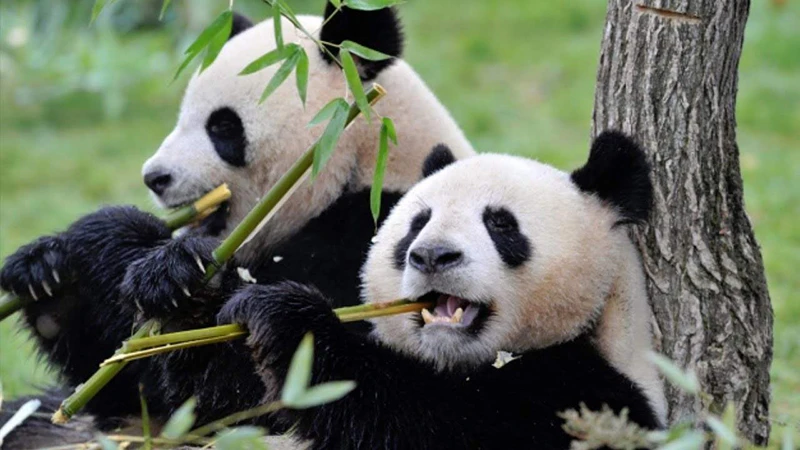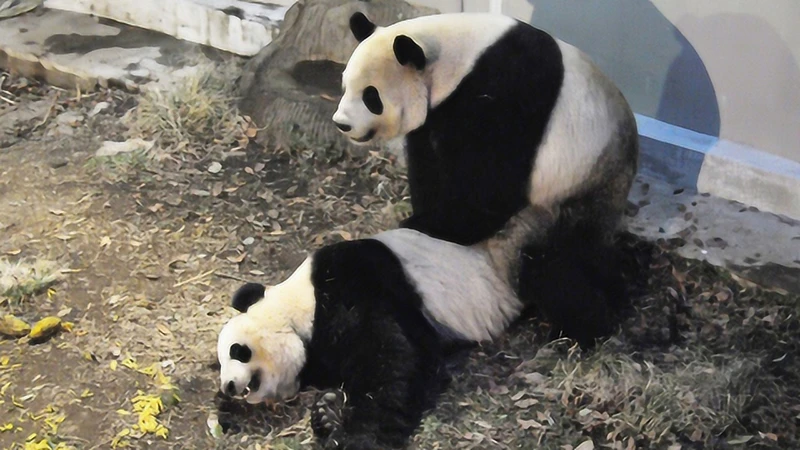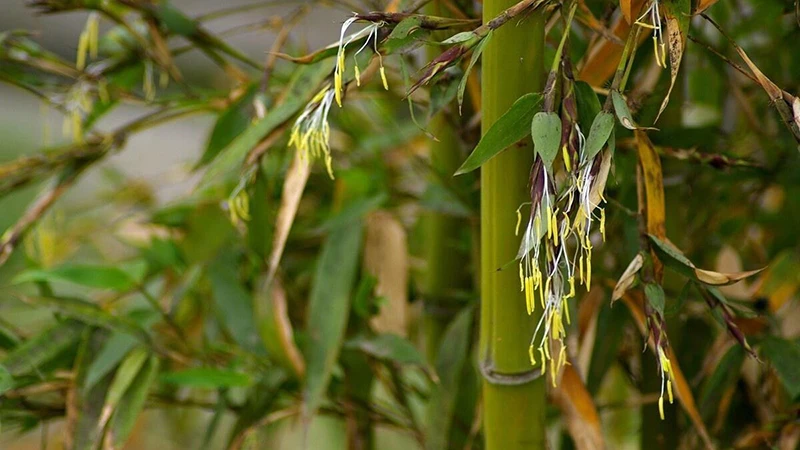The Panda’s Evolutionary Success
Pandas are undeniably charming, but is adorability a sufficient reason to invest substantial resources in their conservation? Are they doomed to extinction, or are we merely squandering resources on their behalf? To address these questions, it is essential to dispel three common myths about pandas.
Myth 1: Pandas Are Evolution’s Dead End
Some argue that giant pandas are evolutionary failures because they subsist on bamboo, a low-nutrition, hard-to-digest plant. Bamboo, essentially a form of woody grass, consists of over 90% lignin and cellulose, making it tough and nutritionally poor. This dietary choice might seem like a dead end, but it's crucial to understand the context of this adaptation.
Pandas once had a diet more aligned with carnivorous ancestors, but a genetic mutation (Tas1r1 pseudogenization) around 4.2 million years ago made them lose their ability to taste meat. This shift to bamboo, though seemingly impractical, was a strategic move. Bamboo’s abundance and the pandas' ability to evade predators in dense bamboo forests allowed them to exploit a niche with minimal competition.
Despite their reliance on bamboo, pandas possess remarkable evolutionary traits to survive on this diet. Their "pseudo-thumb," an evolved wrist bone, enables them to grasp and manipulate bamboo stalks with precision, a feature also seen in koalas and some marsupials. Additionally, pandas have powerful jaws and teeth capable of slicing through bamboo like a knife through cucumber. This robust dentition and specialized digestive system are evolutionary adaptations ensuring their survival despite their unique dietary needs.
Myth 2: Pandas Are "Sexually Frigid"
Another misconception is that pandas are difficult to breed. The reality is that their reproductive cycle is closely linked to bamboo’s growth patterns. Pandas typically mate between March and May, but females are only fertile for a few days each year. During this brief window, males compete for mating opportunities, leading to successful reproduction when conditions are right.
In the wild, pandas start breeding at 4 to 5 years old. Females usually give birth to one or two cubs every two to three years, with a high survival rate for the stronger offspring. The misconception of pandas being unable to reproduce stems from captivity challenges rather than natural behavior. Captive environments often fail to replicate the nuanced conditions pandas need for successful breeding.
Pandas exhibit delayed implantation, where fertilized eggs remain in a dormant state until environmental conditions favor their development. This adaptation aligns their birthing cycle with optimal bamboo availability, ensuring the cubs are born during periods when food is plentiful.
Myth 3: Bamboo’s Flowering Will Lead to Panda Starvation
While bamboo does flower and die in cycles, this is not a catastrophic issue for pandas. They have access to nearly 40 different bamboo species, each with varying flowering schedules. When one species dies off, pandas simply migrate to other bamboo sources. Their acute sense of smell helps them locate new bamboo sources, ensuring their survival even during flowering events.
Bamboo’s life cycle is part of a broader ecosystem that supports pandas. A significant threat to their survival is not bamboo's flowering but habitat loss. Deforestation, agricultural expansion, and urbanization fragment and diminish their natural habitats, making it difficult for pandas to find sufficient bamboo and other resources.
Habitat Loss: The Real Threat
The panda's true vulnerability lies in habitat destruction. Healthy bamboo forests require a forest canopy to thrive. Without trees to provide shade, bamboo grows too densely and becomes less viable. Moreover, intact forests provide the necessary conditions for pandas to breed and find shelter.
In recent decades, human activities have encroached upon panda habitats. Logging, mining, and development have fragmented these vital areas, creating isolated pockets of habitat that hinder genetic diversity and overall population health. For example, in the Wanglang Nature Reserve, over a third of the panda habitat has degraded due to grazing and deforestation. The resulting habitat fragmentation impedes pandas' ability to migrate and adapt to environmental changes.
Conservation Beyond the Panda
Conserving pandas extends beyond protecting the species itself. Panda habitats are rich in biodiversity, supporting over 8,000 species, including many endemic and endangered plants and animals. The protection of panda habitats safeguards these ecosystems and the countless species dependent on them.
China’s efforts to preserve panda habitats have also led to the conservation of broader ecological regions. These efforts not only benefit pandas but also ensure the survival of other unique and vulnerable species living in these forests.
In conclusion, pandas are not a failed evolutionary experiment. They are a testament to nature's ability to adapt and thrive in specialized niches. The real challenge lies in addressing the habitat loss that threatens their survival. By focusing on preserving panda habitats, we protect not just a single species but a complex web of life that relies on these pristine environments. Pandas, with their global appeal, serve as a beacon for broader conservation efforts, ensuring that these vital ecosystems remain intact for future generations.




